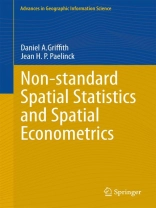Table of Content
Part 1. Non-standard spatial statistics.- 1. Introduction: spatial statistics, – 2. Individual versus ecological analyses.- 3. Statistical models for spatial data: some linkages and communalities.- 4. Frequency distributions for simulated spatially autorcorrelated random variable.- 5. Understanding correlations among spatial random variables.- 6. Spatially structured random effects: a comparison of three popular specifications.- 7. Spatial filter versus conventional spatial model specifications: some comparisons.- 8. The role of spatial of autocorrelation in prioritizing sites within a geographic landscape.- 9. General spatial statistics conclusions.- 10. References: spatial statistics (Part 1) Part 2. Non-standard spatial econometrics.- 11. Introduction: spatial econometrics.- 12. Mixed linear-logarithmetic specification for Lotka-Volterra models with endogenously generated SDLS-variables.- 13. Selecting spatial regimes by threshold analysis.- 14. Finite automata.- 15 Learning from residuals.- 16. Verhulst and Poisson distributions.- 17. QUARLIREG: qualitative regression and its application to spatial data.- 18. Filtering complexity for observational errors and spatial bias.- 19. General spatial econometrics conclusions.- 20. References: spatial econometrics (Part 2).









